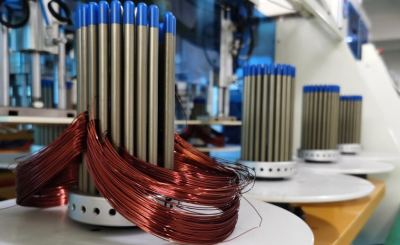Have you ever paused to think about the sheer power of automation? Imagine a world where 749 billion working hours, time once spent on manual tasks, can be freed up, thanks to automation. That’s not merely a number; it’s a testament to the transformative strength of automation in the manufacturing domain.
This evolution isn’t just about speeding up processes or cutting costs. It’s about a paradigm shift in our approach to production—a future where machines and humans work hand-in-hand, heralding not only increased productivity but a whole new era of manufacturing.
Also Read: Hardware Interoperability Testing
What is the Current State of Automation in Manufacturing?
The journey of automation in the manufacturing sector is both impressive and dynamic. Its potential is perhaps best illustrated by examining specific markets. For instance, the Industrial Automation Market in India is on a meteoric rise. It’s anticipated to soar from USD 13.25 billion in 2023 to a whopping USD 25.80 billion by 2028, marking a robust growth with a CAGR of 14.26%.
The momentum doesn’t stop there. Globally, certain nations are leading the charge in embracing automation. As of 2023, the top five nations at the forefront of manufacturing automation are South Korea, Singapore, Japan, Germany, and China. Their investment and trust in this technology lay the groundwork for a manufacturing future that is smarter, faster, and more consistent.
Also Read: Embedded Software Development Services
Key Statistics in Automation in Manufacturing
Before the onset of the COVID-19 pandemic, India was already strategically positioned to leverage the burgeoning sector of robotic process automation (RPA). The nation is home to an impressive number of over 42,000 hyper-intelligent automation (HIA) developers.
The majority of this talent pool is nestled within the tech hubs of Bengaluru, housing 35%, and New Delhi, boasting 18%. This concentration of expertise not only speaks to the country’s preparedness but also its commitment to driving innovation in this sphere.
Trends in Automation in Manufacturing
The world of automation is constantly evolving, with recent breakthroughs focusing on integrating AI with machinery, ensuring that machines can learn, adapt, and optimize their operations in real time.
Adoption Rate: The eagerness with which industries are adopting new automation technologies is telling of its benefits. With reduced errors, increased efficiency, and scalable operations, more and more sectors are jumping on the automation bandwagon.
Industry Leaders: Several industries are surging ahead in the race to automate. The automotive, pharmaceutical, and electronics sectors are among those that have particularly showcased an affinity for automation, revolutionizing their production lines and processes.
Also Read: Hardware Engineering Services
Final Thoughts
The arena of automation in manufacturing is expansive, with its horizon only set to broaden. The statistics are clear: the potential for revolutionizing production is enormous. Manufacturers have every reason, both empirical and projected, to integrate automation into their processes.
Not only will they be riding the wave of the future, but they will also be playing a pivotal role in shaping it. If you’re in the manufacturing domain, now’s the time to consider embracing automation, leaning on the compelling statistical evidence that points towards a smarter, more efficient future.
Dive into the world of industrial automation today and become a harbinger of the manufacturing evolution. If you need any assistance, please don’t hesitate to contact Utthunga, a premier product engineering company with 15+ years of experience in driving industrial automation across various industries.








